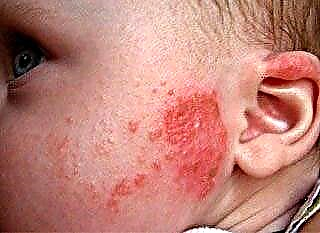Depending on the point of application, all medications are divided into local and systemic drugs. At the same time, local remedies have a number of advantages. Their therapeutic effect does not apply to the entire body, which means that they are safer. In addition, it is precisely the purposefulness of the action of such funds that is important.
Local treatment of otitis media, which consists in the use of ear drops, is also an important component of the comprehensive treatment of patients with this pathology. These funds have a chiseled effect, the effect of their application is achieved in a matter of minutes. In addition, a convenient form of release allows patients to use these funds on their own. The use of topical preparations for the treatment of otitis media is also evidenced by the presence of ear drops with various components.
Rules for using ear drops

Any drug is effective and safe only when it is used correctly.
Insufficient dosage of the drug or premature interruption of antibiotic intake leads to the appearance of a stable microflora, relapses, which significantly complicates treatment.
Other drugs that are taken incorrectly, including topical preparations, can also be toxic.
The situation with ear drops is complicated by the fact that they may contain ototoxic components. If they enter the tympanic cavity, these substances can cause serious damage, up to permanent hearing loss. This is why it is so important to know how to properly instill your ear.
The most important condition for the correct use of ear drops is that these funds can only be used as directed by an otolaryngologist.
In this case, consulting a pediatrician or therapist is not enough. For the correct appointment of these funds, it is important not only to clarify the diagnosis, catarrhal or purulent otitis media, but also the condition of the tympanic membrane, which, with a certain course of otitis media, may be injured. At the same time, suppuration is often insignificant and subtle, which complicates the diagnosis. Clarification of the diagnosis is possible in such cases only after an instrumental examination.
Ototoxic drops
The specialist will be able to decide which ones and how to instill drops in the ears only after carrying out an otoscopy and clarifying the diagnosis. Ototoxic drugs include
- ethanol;
- non-steroidal anti-inflammatory drugs;
- some antibiotics such as gentamicin, kanamycin.

In the presence of a perforated tympanic septum, ear drops containing ototoxic components cannot be applied.
Otherwise, the condition may worsen.
Features of instillation with suppuration
Otorrhea accompanying perforation of the tympanic membrane is an important symptom, on the presence of which the treatment tactics for otitis media depends. With the existing suppuration, it becomes more difficult to instill the ear, since the ear canal is filled with a viscous content that prevents the access of the drug.
In order for the ear drops to reach the point of application, that is, the middle ear cavity, it is recommended to first clean the external auditory canal of exudate.
Only cotton bands or turundas are used for this. To achieve maximum effect, as well as to simplify the task, these products can be pre-soaked in a 2% hydrogen peroxide solution. This procedure will help dissolve the exudate and absorb it more easily.
Description of the procedure
Burying the ear is carried out in a horizontal position of the patient, alternately on one or the other side. After each instillation, the patient needs to be in a horizontal position for several minutes so that the drug reaches the tympanic membrane.
A few more words about how to put drops into the ear.
It is very important to observe the temperature regime of the solution itself. Ear inflammation is accompanied by the development of pain, sometimes quite intense. Warming procedures are characterized by the fact that they mask the pain syndrome.
In order to alleviate the patient's condition, ear drops should be used warmed up.
The optimal temperature is the patient's body temperature, that is, 35-40 degrees. To heat the drug, it is recommended to hold the pipette with drops in your hands for several minutes. You can get the desired temperature faster if you immerse the bottle with drops in water, the temperature of which should be about 50 degrees. This will allow the medicine bottle to be heated to the desired level. It is strictly forbidden to use a microwave oven for these purposes.
With otitis media, both ears are buried, starting with the one where the pain syndrome is less pronounced. Quite often, the instillation procedure is carried out by an indirect method. This happens when the drug is buried not in the cavity of the external auditory canal, but on a cotton turunda standing in it.
The injection method used for instilling drugs has also become widespread. With this method, after instillation, pressure is exerted on the tragus, which increases the pressure of the drug in the ear, and, consequently, its absorption.
Instructions
Annotation for ear drops includes the characteristics of the drug, indications for use, recommended dosages, as well as features of use in children, pregnant and lactating mothers. Many instructions are provided with information on how to properly place the drops in the ear. This information is also important.
Instructions for using ear drops:
- Before using the medicinal product, you should carefully study the annotation to it;
- It is allowed to use only drops recommended by the attending physician. Replacement with an analogue in this case can be dangerous;
- Before instillation, the external auditory canal must be cleared of sulfur and other contents;
- Instillation is carried out with the patient lying on his side;
- After the end of the procedure, the patient should continue to be in a horizontal position for a few more minutes;
- Burying can be carried out indirectly, using a cotton turunda, or by injection.
Ear inflammation should be treated under the direct supervision of an otolaryngologist. In the course of treatment, one stage of purulent otitis media can replace another. This forces a correction. treatment, replacement of some drugs with others. The single general rule of how to drip drops into the ears concerns only the technical side of this issue. As for the drugs used, the choice can only be made by a specialist. In the choice of means, the clinical picture, the severity of the disease, the presence of concomitant pathology, the degree of intoxication, the age of the patient matter.
treatment, replacement of some drugs with others. The single general rule of how to drip drops into the ears concerns only the technical side of this issue. As for the drugs used, the choice can only be made by a specialist. In the choice of means, the clinical picture, the severity of the disease, the presence of concomitant pathology, the degree of intoxication, the age of the patient matter.
Patients with ear inflammation are most often treated on an outpatient basis. Only in severe cases, when there is a complication of purulent otitis media, the patient is hospitalized in the ENT department. All patients should know how to properly instill drops in their ears. This will help to avoid serious mistakes, will contribute to the fastest normalization of the condition.



